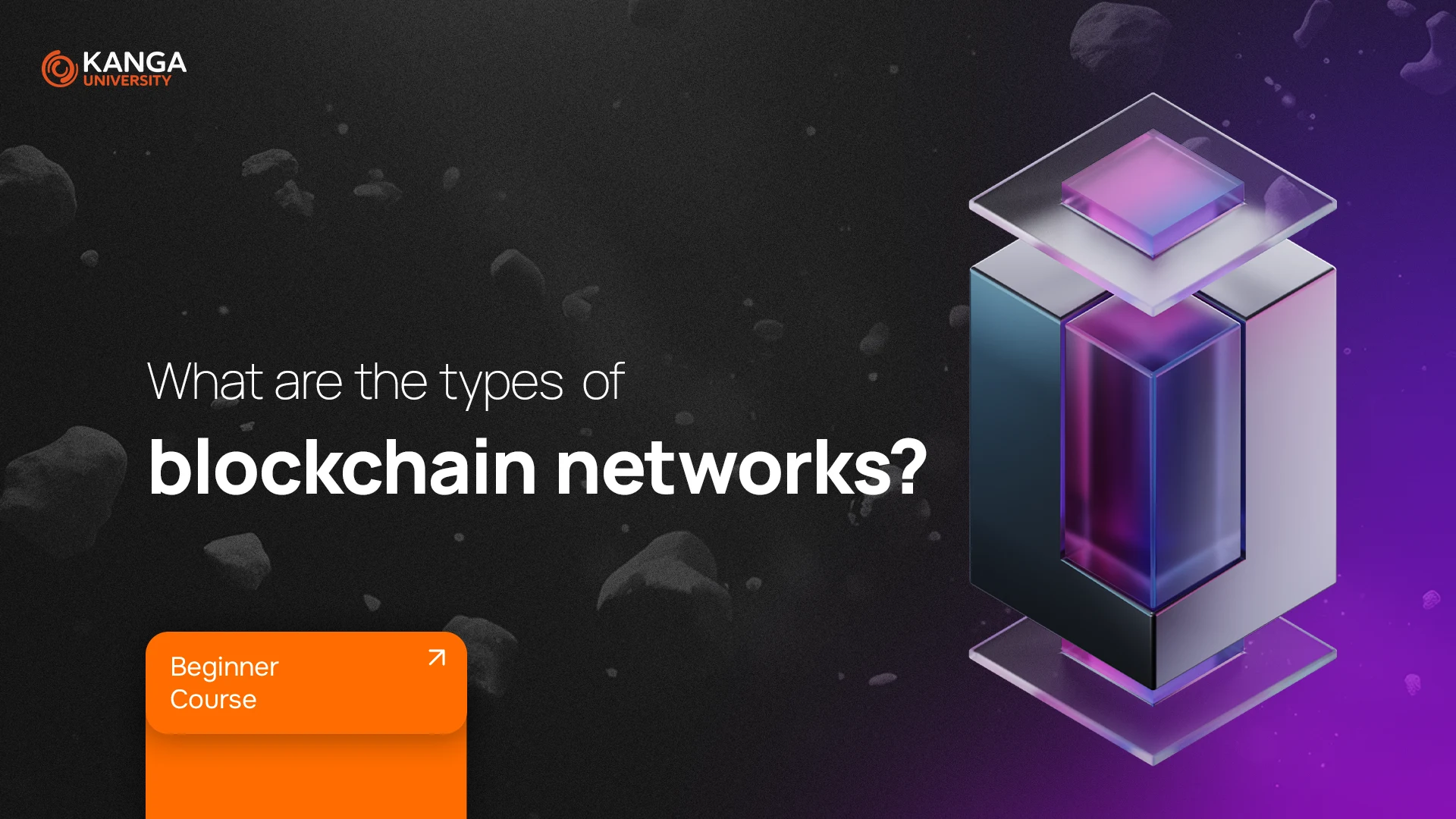
Blockchain is a decentralized database that is distributed across a network of computers. Thanks to this technology, transactional data from various sources is recorded and synchronized throughout the network. Each participant, known as a node, holds a copy of the entire blockchain, ensuring shared access to data without a single central location.
Data is organized into blocks and linked together using cryptographic hashing functions, which create unique identifiers. Blockchain technology ensures data integrity and security. Manipulating data is virtually impossible because any changes require the approval of the majority of network participants, eliminating the risk of fraud and manipulation.
Types of Blockchain Networks
Public Blockchain
A public blockchain is a type of database that is accessible to everyone. Anyone with an internet connection can join the network, verify transactions, and add new blocks to the chain. This means you can connect to a public blockchain from anywhere in the world at any time.
In a public blockchain, you have access to current and past transaction records that have taken place within the network. The source code of public blockchains is usually open and available, allowing anyone to review transactions and report any potential issues.
A public blockchain can operate on different consensus protocols that ensure agreement within the network:
Proof of Work (PoW): Participants solve complex mathematical problems to add new blocks to the chain. PoW is energy-intensive but provides a high level of security.
Proof of Stake (PoS): Participants are selected to create blocks based on the number of tokens they hold. PoS is more energy-efficient than PoW.
Delegated Proof of Stake (DPoS): Token holders elect delegates who are responsible for creating new blocks and verifying transactions. DPoS increases network efficiency and scalability.
Advantages:
- Transparency: Everyone can view transactions, increasing trust and allowing for precise transaction history tracking.
- Open access: Anyone with an internet connection can join the network and participate.
Disadvantages:
- Scalability: As the number of participants grows, transaction processing may slow down.
- High energy consumption: Methods such as PoW require large amounts of energy, which can be harmful to the environment.
- Low transaction efficiency: Public blockchains can process a limited number of transactions per second.
- Transaction costs: During high network activity, transaction fees can be high.
- Lack of privacy: All transactions are publicly visible, which can be problematic for confidential information.
- Regulatory challenges: The openness and global nature of public blockchains can make compliance with regulations more difficult.
Examples of Use Cases:
- Cryptocurrencies: Bitcoin and Ethereum are examples of public blockchains used for exchanging value and conducting financial transactions without intermediaries.
- NFT (Non-Fungible Tokens): Public blockchains like Ethereum are used for creating, buying, and selling unique digital assets, such as digital art, collectibles, and music.
- Decentralized Finance (DeFi): DeFi platforms operating on public blockchains offer financial services such as loans, insurance, and exchanges without relying on traditional financial institutions.
- Smart Contracts: Public blockchains enable the creation and execution of smart contracts that automatically fulfil contract terms, such as rental agreements or trade deals.
- Voting: A public blockchain can be used for conducting secure and transparent voting, eliminating the risk of manipulation and fraud.
- Fundraising: Public blockchains support fundraising through Initial Coin Offerings (ICO) and other crowdfunding methods, increasing transparency and investor trust.
- Supply Chain Tracking: Public blockchains can be used to track products in the supply chain, ensuring full transparency and authentication.
- Identity Management: Public blockchains can securely store and manage identity data, making verification and data protection easier.
Private Blockchain
A private blockchain is a type of database that is more restricted compared to a public blockchain. It is usually controlled by a single organization or entity, although it can still maintain some level of decentralization. In many aspects, private blockchains are similar to public ones, but they differ in management and access control.
In a private blockchain, a central authority manages the network and determines who can join and what roles different nodes have. This entity assigns permissions and sets the rules for network operation.
Private blockchains are often used in smaller companies and organizations, where their main advantages are speed and efficiency. The limited number of nodes in a private network speeds up the transaction verification process and increases scalability, as the network size can be adjusted to specific needs.
Advantages:
- Speed: A smaller number of nodes speeds up transaction processing.
- Scalability: The network can be easily adapted to an organization’s needs and requirements.
Disadvantages:
- Lower trust: A limited number of participants increases the risk of a 51% attack and may reduce trust in the network.
- Reduced security: Fewer nodes can make the network more vulnerable to attacks and manipulation.
- Lack of full decentralization: Private blockchains are managed by a single organization, which may undermine the concept of full decentralization typical of public blockchains.
Examples of Use Cases:
- Logistics and Supply Chain Management: Private blockchains are used to monitor and track products in the supply chain, ensuring transparency and security.
- Asset Tracking and Verification: In the financial and real estate sectors, private blockchains can track and verify assets, facilitating audits and increasing transparency.
- Internal Voting: Companies and organizations can use private blockchains for secure and transparent internal voting, eliminating the risk of vote tampering.
- Identity Management: Private blockchains can be used for secure identity management and access control, allowing for effective management of permissions and authorization within organizations.
- Contract Management: In organizations, private blockchains can be used for managing and enforcing contracts and smart contracts, improving business process efficiency.
Hybrid Blockchain
A hybrid blockchain combines features of both private and public blockchains. This allows companies to create a network where they control access to data while enabling smart contract-based transactions.
Advantages:
- Security: A hybrid blockchain operates in a closed environment, reducing the risk of a 51% attack and providing greater data protection.
- Cost Efficiency: Transaction costs are lower than in public networks, while also offering increased privacy.
- Scalability: Hybrid blockchains can better adapt to an organization’s needs, improving efficiency and scalability compared to some public solutions.
Disadvantages:
- Lack of transparency: Unlike public blockchains, hybrid networks do not offer full transparency, which may limit trust among external participants.
- Lower user engagement: The lack of incentives and rewards for participants may affect their activity and involvement in blockchain development.
Examples of Use Cases:
- Real Estate Sector: Hybrid blockchains can be used for managing and verifying real estate transactions, ensuring data privacy while maintaining data integrity and security.
- Retail Trade: In retail, hybrid blockchains can manage supply chains, track product origins, and ensure transaction security while protecting data from unauthorized access.
- Banking and Finance: Hybrid blockchains are used in the financial sector to ensure customer data privacy and transactions while allowing regulatory compliance and audits.
- Identity Management: Used for secure identity and access management, hybrid blockchains can control user permissions in a highly secure environment.
- Contract Management: Smart contracts in hybrid blockchains can automatically execute agreements and transactions in a closed but flexible environment, which is useful in various industries.
Summary
Each type of blockchain has its unique advantages and disadvantages. The choice of the best solution depends on the specific needs and goals of a project. There is no single universal answer to which blockchain type is the best. Before making a decision, it is essential to define the requirements and goals that blockchain technology should fulfil. Based on this information, the right choice can be made, and the most suitable solution can be implemented.
